Know the DELE / SIELE / OPI exam curriculum
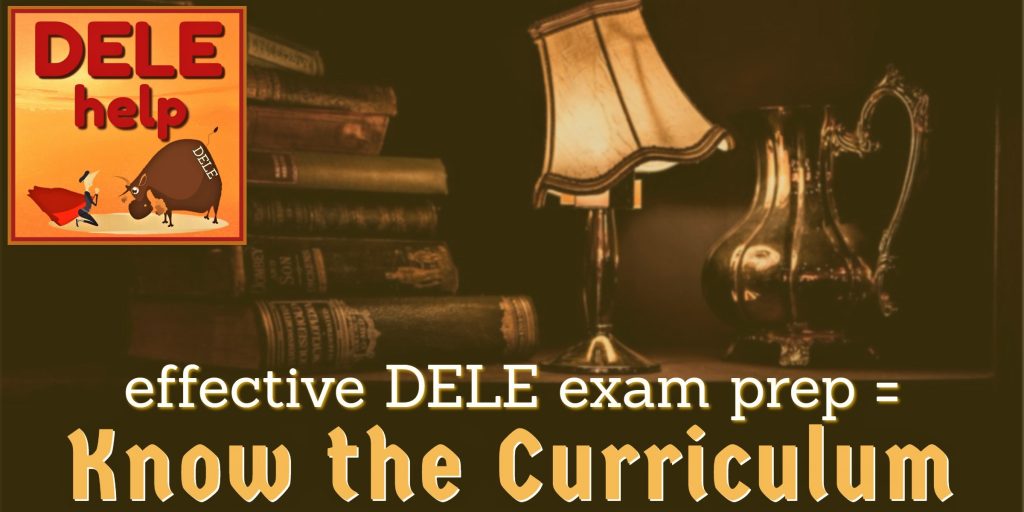
Know the DELE / SIELE / OPI exam curriculum for effective preparation
Are you preparing for an exam of Spanish? The DELE or its new online twin, the SIELE, or the very similar American equivalent, the OPI? If so – then, to ensure that your preparation will be effective and that you don’t miss out important elements, you absolutely have to know the DELE / SIELE / OPI exam curriculum.
WHY KNOW THE DELE / SIELE / OPI EXAM CURRICULUM AND DIDACTIC GOALS?
Ask yourself: Do I really know what the curriculum of the DELE / SIELE, or for the Oral Proficiency Interview contain, at my level? In other words, what knowledge and skills will I be tested for? Do you know, for example, that the official DELE / SIELE curriculum document consists of ten chapters – only one of which deals with grammar? What are the required knowledge and skill sets, beyond grammar, that the other nine chapters prescribe?
Do you know the didactic goals that these exams of “communicative competency” in Spanish are designed to achieve? Do they just serve to assess abstract academic knowledge of the Spanish language, or rather aim to test real-world “CAN DO” communicative skills? What does the Common European Framework of Reference for Language (the CEFR) policy document, which has been accepted around the world and which guides all three these exams, say about these key didactic goals that examiners are guided by? (Being distinctive goals and assessment criteria that make these exams very different from school or college language testing!).
Can you really prepare effectively for your exam of Spanish, if you don’t know what the curriculum’s content is and what the CEFR prescribes, in terms of the knowledge and skill sets that candidates must be able to demonstrate at each level? To illustrate: if you are thinking of doing a B-level exam, do you know which of the tenses of the Subjunctive mood you need to master for B1, and which additional ones for B2? (Keeping in mind that this little example is just about the one chapter dealing with grammar – what about the other nine?).
So, again, ask yourself: how can I prepare myself sensibly – that is, knowing what knowledge content to prioritize for studying, and especially which “functional language use” skills (the “can do” statements, which form an entire chapter) must I prioritize for PRACTICING, if I don’t first become familiar with the exam curriculum and didactic goals?
It is unfortunately true that very few students (or their tutors, sadly) give much attention to the curriculum. It seems that some students just assume that these exams will be the same as school or college exams. Or perhaps worse (in the case of those with a vague familiarity with these exams), it seems that it is often thought by such students that one can kind of muddle through with one’s “street Spanish”, without prepping in a properly structured way, because of the fact that these exams are practical tests of one’s ability to actually communicate in Spanish in real-world scenarios (i.e., without there being direct, college-style exam questions on Spanish grammar, spelling, culture etc.).
The truth, though, is that the way in which your “can do” mastery of the four communicative competencies (the four skills, i.e., reading and listening comprehension, plus oral and written expression) are tested, do assess whether you possess the required knowledge and skill sets with reference to the curriculum – even if indirectly. Those four competencies are of course very broad. So is the sheer scope of any language. Therefore – unless your are game for preparing for literally anything and everything to possibly crop up in your exam – the only way to make your task more manageable is to know to what specific knowledge and skill sets examiners are limited at the level that you are targeting. This is, of course, stipulated in the curriculum for each level.
Once you understand the need for knowing the curriculum and didactic goals, the unfortunate truth is that an important practical problem then surfaces. Those students who do then go to the considerable trouble of locating the voluminous curriculum document in the hidden recesses of the world-wide web, will encounter a formidable obstacle, even for those who are aiming for C2 level. The reality is that the official DELE / SIELE exam curriculum is huge and complex, written in high Spanish – by academics, for academics.
MAKING IT EASY TO KNOW THE DELE / SIELE / OPI EXAM CURRICULUM
At DELEhelp we have translated the relevant curricula content into everyday English. We have summarized the curricula as part of our FREE in-house Workbook #9: DELE / SIELE Exam Orientation and Acing Tips. This one-of-a-kind DELE / SIELE exam preparation book of 96 pages is available to you, entirely FREE and without any obligation, by simply asking for it; use our convenient contact information form by clicking on the IMAGE above. Apart from the curriculum, this comprehensive DELE / SIELE exam preparation book covers the CEFR’s nature and goals for the DELE / SIELE system, the exam format, the scoring criteria that are applied, plus our top tips for acing the DELE / SIELE exam. (If you are prepping for the OPI / OPIc Spanish test, simply ask in addition for our free Workbook #8, Prepping for the OPI).
What follows here-below, is a brief introduction of these topics. For the more detailed treatment of these important subjects, do not hesitate to ask for our free DELE / SIELE & OPI exam preparation books. Because the DELE and the SIELE use the same curriculum (the principles of which the OPI package of skills tests also follow), I will from this point on refer only to the DELE by name, merely for the sake of brevity and convenience – everything applies equally to the SIELE and the OPI and the latter’s companion tests, the RPT (Reading Proficiency Test), LPT (listening) and WPT (writing).
The DELE diploma goals:
To understand what one must prepare for, it is essential to be familiar with the DELE system’s goals. At its outset, the official Common European language framework (CEFR) states about its policy document that: “It describes in a comprehensive way, what language learners have to learn to do in order to use a language for communication and what knowledge and skills they have to develop so as to be able to act effectively. The description also covers the cultural context in which language is set.”
The Common Framework assessment system has as goal the certification of a candidate’s practical competency at using Spanish as language-in-action. The exam therefore simulates actual communication formats within a real-world, everyday social and economic context, set in the cultural context of the target language nation. It views the candidate as a living actor (“social agent”) in a foreign-language environment, who has tasks to perform – which he/she cannot accomplish without competency at communicating in that language. This practical approach defines communication as the ability to comprehend the received spoken and written message, and to express and convey a meaningful message in return, both orally and in writing.
The Policy Framework describes the level of communicative competency required at, as an example, the B1 level as follows: “(The candidate) can understand the main points of clear standard input on familiar matters regularly encountered in work, school, leisure, etc. Can deal with most situations likely to arise whilst travelling in an area where the language is spoken. Can produce simple connected text on topics which are familiar or of personal interest. Can describe experiences and events, dreams, hopes and ambitions and briefly give reasons and explanations for opinions and plans.” (We are using Level B as reference here, because it is situated at mid-point in the range, so that students at levels A or C will thus be able to relate to it – the full curriculum inventory is just too voluminous to treat every level within the confines of this blog post).
For Level B2, this is the policy document’s description of competencies: “(The candidate) can understand the main ideas of complex text on both concrete and abstract topics, including technical discussions in his/her field of specialisation. Can interact with a degree of fluency and spontaneity that makes regular interaction with native speakers quite possible without strain for either party. Can produce clear, detailed text on a wide range of subjects and explain a viewpoint on a topical issue giving the advantages and disadvantages of different options.”
Now it stands to reason that the clear step-up seen between B1 and B2 will require a broader field of knowledge and enhanced skills on the part of the candidate aiming for the higher level. But more knowledge of what, and skills in which sense, exactly? The DELE curriculum inventory document details what this knowledge and skills should consist of. We will illustrate its scope and focus with examples taken from the B-level inventory.
The DELE B-Level Curriculum Inventory:
The official curriculum inventory for DELE Level-B is divided into ten main chapters. Because DELE exams simulate real life, the scope and number of knowledge fields and skill sets involved are as wide as life itself. In these exams, no-one is going to be required to write college-style abstract theoretical essays on phenomena of grammar or forms of Hispanic socio-cultural celebration. However, it is undeniable that comprehension of a language depends as much on knowledge of its cultural context as on knowledge of vocabulary or grammar rules.
Just looking at the titles of the different curriculum inventory chapters, gives one a good feel for the width of the curriculum’s scope. They are: (1) Grammar; (2) Pronunciation; (3) Spelling; (4) Functional Language Usage – i.e., the “can do” statements of communicative tasks that a student must be able to perform; (5) Tactics and Pragmatic Strategies; (6) Genres of Discourse and Textual Products; (7) Generalized and Specific Notions; (8) Cultural References; (9) Socio-Cultural Knowledge and Behaviour; and (10) Intercultural Dexterity.
The Level-B grammar inventory alone runs to thirty small-print pages. It differentiates in detail the knowledge required for B1 and B2. An example of this is the specification regarding the tenses of the Subjunctive mood a candidate needs to know – for B1, it is only the present subjunctive, whereas for B2, three more tenses of the subjunctive mood are added: the perfect, the pluperfect and the imperfect (at Level A, knowledge of the Subjunctive is not required).
It probably didn’t come as a surprise to you that there is a formal curriculum inventory for grammar, nor that chapters also exist for spelling and for pronunciation. What most students are surprised by, is that the curriculum goes far beyond these stock language exam aspects, to include a wide range of functionalities as well as knowledge about social mores, traditions, Hispanic history, geography, economy and the like. You will better understand the need for this when you read about the science behind doing well in listening and reading comprehension in our Reading Comprehension blog post, or in the free Workbook mentioned earlier.
It is well established that comprehension depends largely on the ability to relate events / words to the broader context of their setting, and to make correct inferences – thus to the depth and width of one’s reference framework of relevant general and cultural knowledge. As it was succinctly put by one of the experts in the field, Prof. Hirsch: comprehension depends of one’s knowledge of words and of the world – in the DELE’s case, of the Hispanic world in particular.
To give you a feel for the level of detail provided in the curriculum inventories, I copy here our brief summation in English of their content on Orthography (spelling) and Pronunciation:
Pronunciation (B1 & B2 same)
- General characterization of Spanish pronunciation;
- intonation (melodic units and their relationship with punctuation, posing of questions, courtesy, giving orders);
- the syllable and accents (identification, relationship between spoken and written accents);
- rhythm, pauses and timing;
- vowel phonemes;
- consonant phonemes;
- grouped sounds.
Spelling
Vowels:
- (B1) diphthongs, tripthongs, hiatuses;
- (B2) protective “e” in front of foreign or Latin words starting with “s” (espectáculo, estadio, estatua, estándar);
Consonants:
- (B1 & B2) words with letters b, v, w / c, k, q, z and digraph ch / g, j / h / y and digraph ll / s, x / t, d;
- use of capital letters – in entire acronyms (ONU), at beginning of words, after punctuation with a colon (:);
- use of lower case letters at start of word – acronyms converted into words (módem, sida), converted proper names for regions etc. (un [vino de] rioja);
- use of cursive letters – titles of literary works and publications, insertions of foreign language into text;
- hyphenation – long words after syllable, maintain original spelling of non-assimilated foreign words, expression of numbers, dual form words (Si no estudias nunca aprobarás. / No es antipático, sino tímido);
- use of Accent marks – general rules, tilde;
- Punctuation – full stop, comma, colon, semicolon, ellipsis, question & exclamation marks, brackets, square brackets, quotation marks, hyphen, underscoring, forward slash, umlaut;
- use of Acronyms and Abbreviations, Symbols.
Click on image to go to blog post
Know the DELE / SIELE / OPI exam curriculum’s chapter on “Functional Language Use” (the very important “CAN DO” statements of what you must be able to DO)
The aspects of functional use of language specified for Level-B fall under these main headings:
- Ask and Give Information;
- Express Opinions;
- Express Preferences, Desires and Wishes;
- Influence the Interlocutor;
- Structure a discourse, and
- Relate Socially (which is, for example, further divided into: greet, return a greeting, direct yourself at someone, present yourself to someone, respond to a presentation, ask about the necessity for a presentation; solicit to be presented; welcome someone; respond to a welcome; excuse yourself, respond to an excusing; thank someone; respond to thanks; present your sympathies/condolences; propose a toast; congratulate; express good wishes; respond to congratulations and good wishes; pass on greeting or wishes for better health; respond to being wished; and take your leave of someone – the other sub-headings have much more ample lists of situations).
As is the case in most languages, there exist stock formulations or politesse’s for each of the above situations in Spanish, which one has to PRACTICE as essential “can do” communicative skills. But without getting familiar with the curriculum first, how would you know that this may be expected of you in the exam?
NB: If you are preparing for the DELE A2 exam (as many students do, who are seeking to qualify for Spanish nationality) you can access our detailed list of the Functional Language Use “can do” tasks for level A2 by clicking on THIS LINK (it will download the document from our Dropbox, as a .pdf).
The History and Culture of the Hispanic World is part of the DELE Curriculum
The three chapters in the curriculum inventory on the history and socio-cultural traditions and characteristics of the Hispanic World are also very detailed. This is our brief summation of the section on history, as prescribed for LEVEL-B:
History of the Hispanic World – events and protagonists of past and present
Legendary personalities and events:
- Milestones of the twentieth and twenty-first centuries: Spain – the dictatorship of Primo de Rivera; the Second Spanish Republic; the Spanish Civil War, the concept of “two Spains”; Franco; the Spanish transition to democracy: Personalities and important events, importance and place of King Juan Carlos in the Spanish transition; Governments of the democratic era: Prime Ministers, prominent personalities, values that Spaniards attach to the monarchy and its role in society.
- Revolutions in Latin America: Mexican revolution, Cuban revolution; revolutionary personalities in Latin America; dictatorship and democracy in Latin America during the second half of the twentieth century; prominent personalities and events.
- Contemporary guerrilla movements in Latin America: [Sendero Luminoso/Shining Path (Peru), Sandinista Popular Liberation Front (Nicaragua), FARC (Colombia), ELN (Bolivia)]; Importance and place of the guerrilla movements in the society of some Latin American countries.
Important events and personalities of social and cultural life:
- sport – hosting Mexico Olympics in 1968 and Barcelona 1992; Miguel Indurain, winner of five Tours de France; Argentina, winner of the World Cup Soccer 1986, and Spain, winner in 2010;
- Awards for Literature and the Arts in Spain [the Cervantes (novels, poetry, plays, essays …), Goya, Max teatro, Onda]; Awards for Literature and the Arts in Latin America [Juan Rulfo Literature Prize (Mexico), National Novel Prize (Bolivia), National Plastic Arts Prize (Cuba)];
- film festivals [Festival Internacional de Cine de San Sebastián, Seminci, Festival de Cine Iberoamericano de Huelva (España); Festival Internacional de Cine Mar de Plata (Argentina); Festival de Cine de Cartagena (Colombia); Festival del Nuevo Cine Latinoamericano de La Habana (Cuba); Festival Internacional de Cine de Guadalajara (México)];
- Nobel Prize for Literature [José Echegaray, Jacinto Benavente, Gabriela Mistral, Juan Ramón Jiménez, Miguel Ángel Asturias, Pablo Neruda, Vicente Aleixandre, Gabriel García Márquez, Camilo José Cela, Octavio Paz, Mario Vargas Llosa];
- Nobel Peace Prize [Carlos Saavedra Lamas, Adolfo Perez Esquivel, Alonso Garcia Robles, Oscar Arias Sanchez, Rigoberta Menchu Tum];
- Nobel for Chemistry [Luis Federico Leloir, Mariano J. Molina];
- the Prince of Asturias Awards.
The above is probably enough for one blog post – this brief introduction to the curriculum is not intended to cause you to obsess about it, or to abandon your DELE / SIELE or OPI aspirations right here and now. However, clearly one cannot prepare intelligently for the exam without being familiar with the curriculum requirements. To make this quite vast and “high Spanish”, academically-written document accessible, we have prepared a comprehensive summation, in English, as part of the FREE Workbook referred to earlier. You will have noticed, too (above), that we’ve published a number of blog posts about specific aspects of the DELE / SIELE curriculum. In addition, we have written two in-house DELEhelp Workbooks to help English-speakers grasp the formative elements in the history of the Spanish language, as well as to relate the evolution and structure of Spanish grammar to that of the English system that you are familiar with (our registered students receive all our Workbooks FREE).
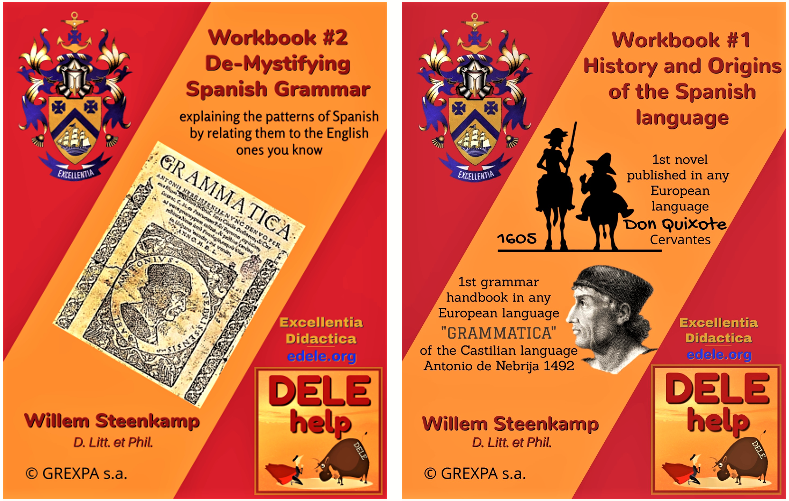
KNOW THE DELE’s ASSESSMENT CRITERIA AND SCORING SYSTEM
The curriculum is, of course, not the only foundational document that one has to be familiar with, in order to do well in your Spanish exam. Knowing the curriculum goes hand in hand with the need to know the official set of four assessment criteria that will be used by examiners to assess your performance in the written and oral expression sections of the exam, plus the scoring system. This is the subject of other posts here on our blog, and is also covered in our free Workbook #9 mentioned earlier.
To ask for your free copy of our 95-page Workbook 9.2 DELE / SIELE Exam Orientation and Acing Tips and/or WORKBOOK #8 about the OPI (which we will supply, upon request, in download .pdf format) please use our convenient contact info form by clicking on the Workbook #9 promo image above, or on THIS LINK.
Obviously, should you enrol with DELEhelp for our personalized, expert one-on-one Spanish exam prep coaching via Skype, we will ensure that you know the DELE / SIELE / OPI exam curriculum. You will also receive our full range of in-house workbooks and related audio-visual resources specific to your exam and level, as free study material (we charge only for the actual Skyping time, at only US$14 per hour, all inclusive). For more information about us and our tuition, please go to our secure website (just click on the IMAGE below, and the site will open in a new window).
Thanks for reading this post, and buena suerte with your Spanish exam prep!
Salu2
Willem
To visit our website, click on this image:


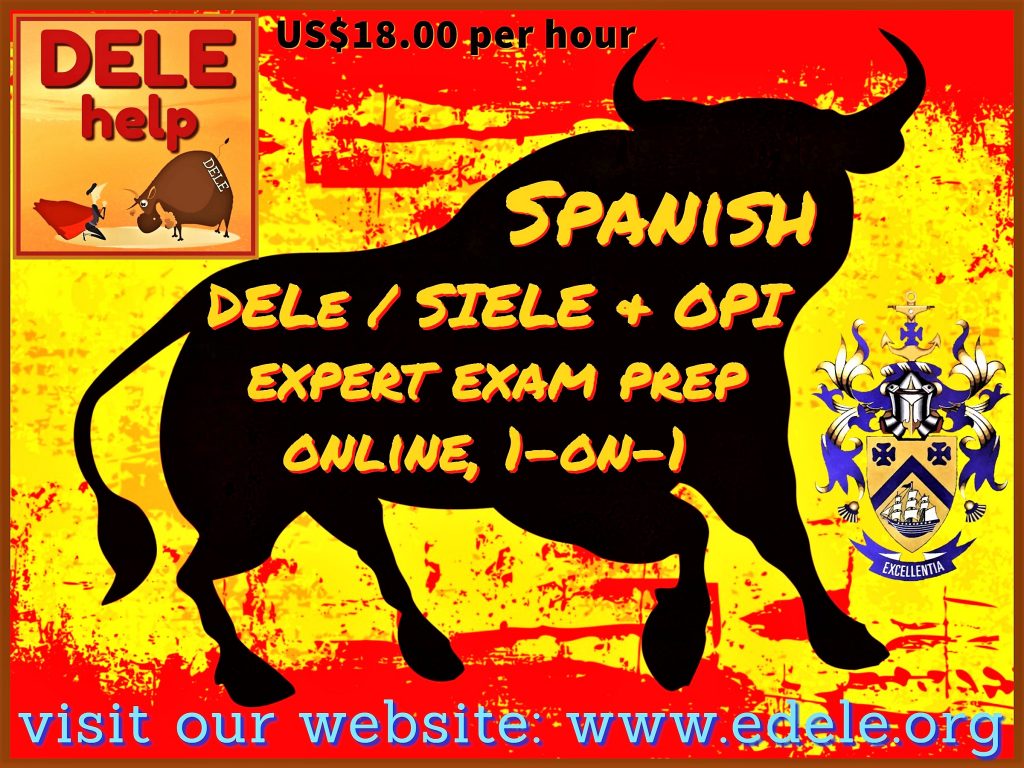
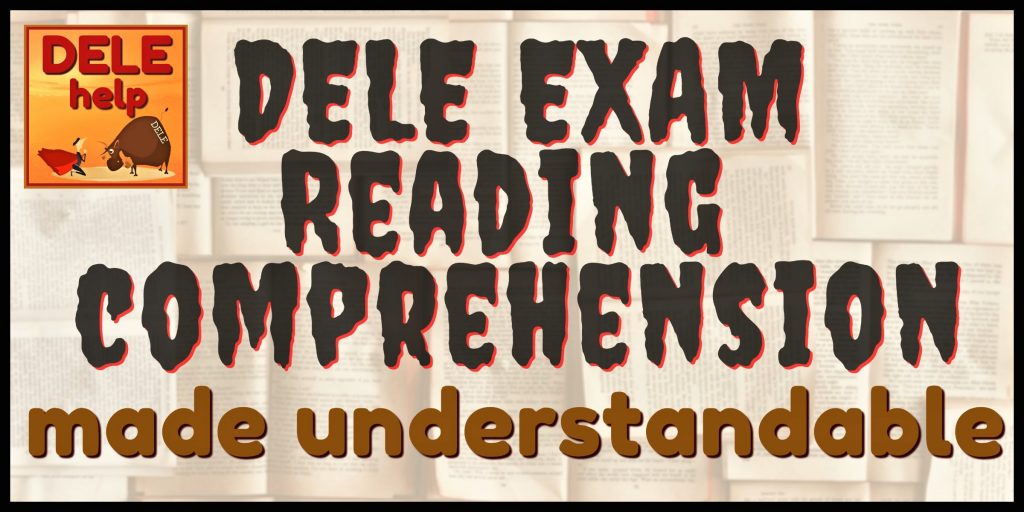

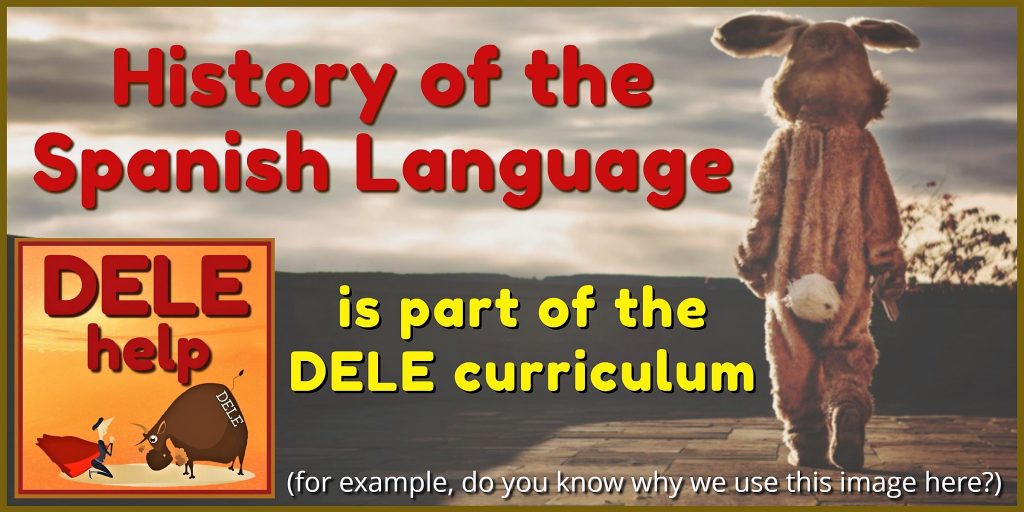


Another very useful post – a real help in planning one”s exam prep.
Hi,
Can you share the download link for the following?
“‘Workbook 9.2 DELE Exam Orientation and Acing Tips”
Hi Prakash – sent by email. Thanks for your interest in DELEhelp.
Hello,
Could you please share the download link for the following?
“‘Workbook 9.2 DELE Exam Orientation and Acing Tips”
Kind Regards,
Grant
Hola Grant – I have sent you the download link, to your e-mail, from my ws@edele.org e-mail account (if you do not immediately see it, please check your spam filter). Anyone who wants the free workbook, should simply send me an e-mail asking for it (send to: ws@edele.org). Thank you for your interest, and best of luck with your exam prep. Saludos cordiales Willem
Hello, would you be able to share with me your Workbook 9.2 DELE / SIELE Exam Orientation and Acing Tips and/or WORKBOOK #8 about the OPI? This post was incredibly helpful!
Hola,
Por favor mandarme los progamas del estudios desde B1 a C2 a mi correo.